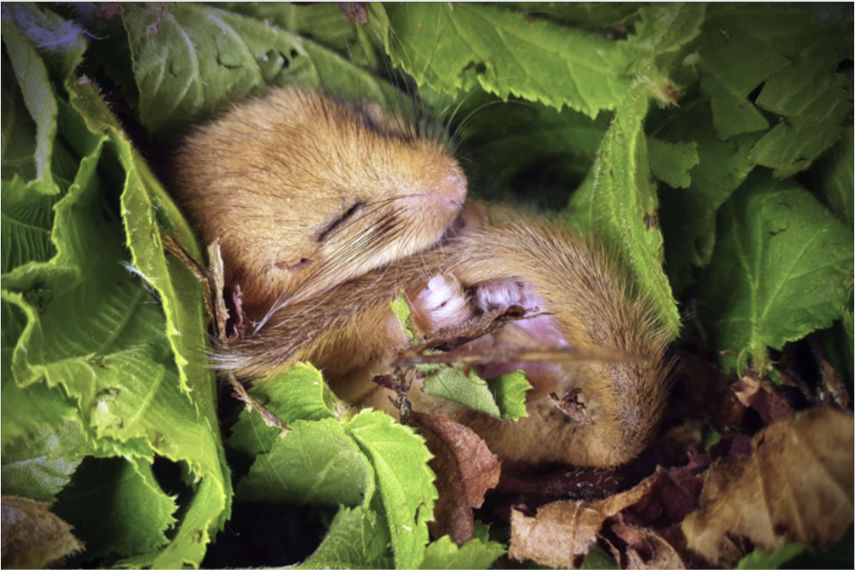Nature & Wildlife | Posted on November 13th, 2023 | return to news
Hazel dormice have declined by 70% since 2000, new report finds
Habitat loss and degradation, alongside climate change, are suggested to be the main reasons for the decline according to ‘State of Britain’s Dormice 2023’ report.

Climate change is among one of the reasons why native dormice populations are thought to be extinct from 20 English counties since Victorian times, and dormice have been lost from Staffordshire, Northumberland and Hertfordshire since the last ‘State of Britain’s Dormice’ was published in 2019.
Hazel dormice are small, native rodents with soft fur, and black eyes and are considered to be key indicator species because where there are dormice, there is usually wider animal and plant diversity too.
The report emphasises the need for dormice to be classified as ‘Endangered’ rather than ‘Vulnerable’ on the IUCN Red List. A revised classification would make them a higher priority species and could result in increased targeted conservation efforts, which would help in reversing their chronic decline.
Dormouse and training officer at People’s Trust for Endangered Species, Ian White, said: “If the decline continues at the same rate, in another 30 years dormouse populations will have fallen by 94% since 2000, which we simply cannot let happen.”
Data collected for the report is from PTES’ National Dormouse Monitoring Programme (NDMP) – the longest running small terrestrial mammal monitoring programme in the world. PTES and volunteers regularly check hundreds of dormouse nest boxes located at NDMP woodland sites across the country and record dormouse numbers.
Using the records, White wants to start rolling out more footprint tunnel surveys in non-woodland habitats such as hedgerows, scrub, roadside and railway verges.
Footprint tunnels will allow PTES to gain a more complete picture of how dormice are faring across multiple habitats rather than just woodlands.
White said: “Once we have data from non-woodland sites too, we can target conservation efforts more widely which we hope will start to reverse the decline.”
PTES, partners and volunteers continue to work to combat the ongoing decline.
Since 1993 when the first reintroduction took place in Cambridgeshire, PTES and partners have now released over 1,112 hazel dormice into 25 different woodlands in 13 counties, with supplementary releases taking place in some areas to improve genetic diversity.
This initiative has ensured that dormice are now present in six English counties they had previously been lost from, most of which are in the Midlands or northern England.
Large-scale landscape projects to restore and connect prime dormouse habitat have also been implemented in Warwickshire and north Wales, offering dormice safe passage and nesting sites between woodlands.
Hedgerow planting has taken place in Yorkshire and Hampshire and volunteer dormouse groups across the country continue to monitor and record local populations.
PTES also launched the Dormouse Footprint Tunnel Survey in 2022 to begin surveying non-woodland habitats and offer training for woodland managers to encourage them to manage their land more sympathetically for dormice and other species.
White concluded: “We know what works for dormice, but we urgently need increased funding to implement this nationally. Hope is not lost as reintroductions, monitoring, research and landscape projects offer a lifeline – and some populations appear to be thriving – but we need to do everything we can on a much bigger scale to prevent the worst case from happening.”
To read the full report, and to find out more about PTES’ dormouse conservation work, visit: www.ptes.org/dormice
Please share post:
Tags: #dormice, #endangeredspecies









